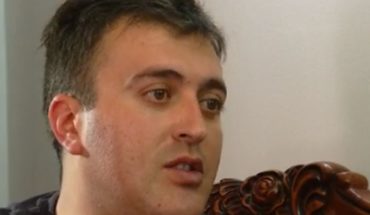Over the past few years, scientists around the world have been searching for and researching various formulas for designing and manufacturing miniature robots. The reason? In the future, these devices, smaller than a grain of salt, are expected to perform tasks ranging from crop pollination, generating actions on new small electronic devices, and entering the human body to clean clogged arteries or deliver medication at specific points.
It looks like science fiction, but no, it’s cutting-edge science and made in Chile.
Rodrigo Soto, director of the Physical Millennium Core of The Active Matter and academic of the Department of Physics of the FCFM of the University of Chile, leads a team that has become a pioneer in the design of micro robots. To date they have not only modeled three different models of micro robots, but lately they designed a “factory” to produce them in scale, a work that was published in the New Journal of Physics.
“One of the difficulties so far in creating micro robots is that each particle that composes them must be assembled one by one. With this research what we did was design something like a ‘factory’ of micro robots, since it allows particles to enter alone by channels and to self-assemble forming the desired device, both in size and quantity. This is undoubtedly a breakthrough and what we hope to do now is see how we can do this with any kind of particle,” Explains Soto.
A pioneering work
When the first micro robots were created in the United States in 2004, it was a tiny grain of salt bar, formed from a part of platinum and a gold part that – placed in oxygenated water – moved as if it had a mini-engine.
A decade later, the director of the Millennium Physical Core of Active Matter, housed in the Department of Physics of the University of Chile and Ramin Golestanian, of the University of Oxford, not only discovered why this microrobot was moving, but they created with the same compounds, a larger and more complex one.
“We discovered that gold and platinum were attracted, but that gold did so more intensely. That caused the gold to move into platinum faster, assemble it, and keep pushing it in its direction, which explained why it moved on its own. So, we saw that if you put several gold and platinum particles in oxygenated water, they were beginning to attract and self-assemble and form a larger and more complex micro robots, forming by many gold and platinum particles that also had movement,” explains Soto.
After that first research, Soto then designed – through computer simulations based on principles of physics – a microrobot that could vibrate.
“Some time later, together with physicist Sebastián González we wondered what would happen if we tied the tip to that micro robot. In doing so, we managed to create a scourge robot, that is, that moved like a sperm. Until then there were only micro robots moving linearly. With this we showed that, also, we could design microrobots with oscillatory movements, which could carry cargo, just as a sperm in his head does by carrying genetic information to fertilize the egg and/or mixing ingredients or drugs using the scourge, like a mini juguera,” explains Dr. Soto.
Future applications
What do we want to make little robots for? Dr. Soto says there are several applications that are being researched in medicine and that seek to introduce small robots into the bloodstream to cure a targeted disease, such as cancer, for example. Other possible applications are in nanotechnology, such as parts of chips that move for a purpose.
“Mobile parts for cell phones or computers, for example, that do some kind of oscillation, throwing things to one side and the other alternately,” Says Soto.
In fact, hybrid solutions are currently being developed that include biological and artificial components in the field of micro robots, so understanding the physics of their systems, that is, their properties, mechanisms or how they behave in various situations, is crucial for their development.
translated from Spanish: Chilean physicists pioneering microrobot design
November 26, 2019 |





